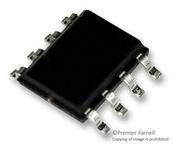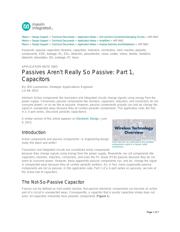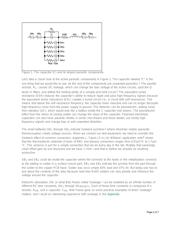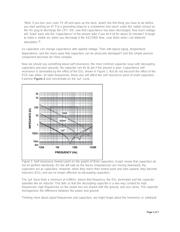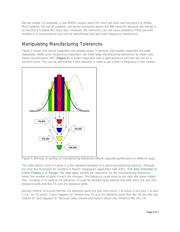下载

Click here for an overview of the wireless
components used in a typical radio
transceiver.
Maxim > Design Support > Technical Documents > Application Notes > A/D and D/A Conversion/Sampling Circuits > APP 5663
Maxim > Design Support > Technical Documents > Application Notes > Amplifiers > APP 5663
Maxim > Design Support > Technical Documents > Application Notes > Analog Switches and Multiplexers > APP 5663
Keywords: passive capacitors resistors, capacitors, inductors, connectors, inert, inactive, parasitic,
components, ESR, leakage, RL, ESL, dielectric, piezoelectric, noise, solder, stress, diodes, Seebeck,
dielectric absorption, DA, soakage, PC trace
APPLICATION NOTE 5663
Passives Aren’t Really So Passive: Part 1,
Capacitors
By: Bill Laumeister, Strategic Applications Engineer
Jul 08, 2013
Abstract: Active components like transistors and integrated circuits change signals using energy from the
power supply. Conversely, passive components like resistors, capacitors, inductors, and connectors do not
consume power—or so we like to assume. However, passive components actually can and do change the
signal in unexpected ways because they all contain parasitic components. This application note, the first
in a 3-part series, discusses parasitic capacitance.
A similar version of this article appears on Electronic Design, June
4, 2013.
Introduction
Active components and passive components—is engineering design
really this black and white?
Transistors and integrated circuits are considered active components
because they change signals using energy from the power supply. Meanwhile, we call components like
capacitors, resistors, inductors, connectors, and even the PC board (PCB) passive because they do not
seem to consume power. However, these apparently passive components can, and do, change the signal
in unexpected ways because they all contain parasitic portions. So, in fact, many supposedly passive
components are not so passive. In this application note, Part 1 of a 3-part series on passives, we look at
the active role of capacitors.
The Not-So-Passive Capacitor
Passive can be defined as inert and/or inactive. But passive electronic components can become an active
part of a circuit in unexpected ways. Consequently, a capacitor that is purely capacitive simply does not
exist. All capacitors inherently have parasitic components (Figure 1).
Page 1 of 7

